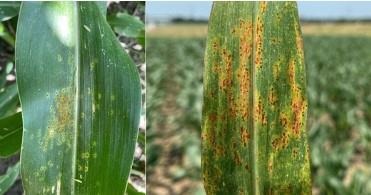USDEC looks at the principal market factors influencing dairy import demand and trade in the year ahead.
Every year, the U.S. Dairy Export Council summarizes the key “signposts” that our analysts will be watching in the year ahead that will determine the direction of U.S. dairy exports and global markets. This year, we’ll focus on the major structural factors that will come into play in 2023.
Here are our six signposts to watch:
Economic headwinds: Inflation and consumer purchasing power
If one word could summarize the global economy in 2022, it’s “inflation.” Driven by supply shortages, Russia’s invasion of Ukraine and strong demand, high inflation rates challenged consumer incomes, reducing purchasing power and forcing consumers to make tough decisions on how to spend their limited currency.
Positively, U.S. inflation is expected to ease in 2023 with a forecast of 2.9%—down sharply from the 2022 average of roughly 8%. Global inflation is also anticipated to improve in 2023—down from the 2022 average of 7.4% to 4.8%.
Purchasing power in both the U.S. and the rest of the world will improve as inflation pressure eases, but that pressure will be felt differently depending on the region and country. Additionally, while the forecast 2023 levels show a decrease, these numbers are still well above pre-pandemic levels.
Compared to the pre-pandemic, five-year average inflation rate (2015-2019), the 2023 inflation forecast for the U.S. is still 83% higher. Similarly, for the world, the 2023 forecast inflation rate is still 54% higher than pre-pandemic levels. So, while the projected easing is positive, consumers worldwide will still be battling elevated prices in 2023.
In terms of U.S. dairy exports, global recovery is important, but U.S. exporters should care most about the recovery in a few key regions. Roughly 75% of U.S. dairy exports are destined for Southeast Asia (SEA), Mexico, China, Japan and Korea. Positively, for the majority of these countries, inflation is forecast to decline faster in 2023 than the world average. In the case of Mexico and China, both countries are anticipated to have inflation rates in 2023 below the five-year pre-pandemic average—all of which is positive for U.S. exports in the year ahead.
Unfortunately, the sharp rise in interest rates (which is the primary instrument used to control inflation) slowed global economic growth. So while inflation is getting under control, the economic outlook is by no means rosy. Thus, our analysts will be watching economies, currencies and inflation rates especially closely in 2023 for signals on dairy demand.
China’s import demand: When will it bounce back?
China will be a critical signpost for the year ahead after dominating global market discussions in 2021 and 2022. Global dairy trade fell 4% (in milk solids equivalent, or MSE) through the first 10 months of 2022, largely because of the precipitous drop-off in Chinese purchasing. Through the first 11 months of 2022, Chinese dairy import volume plummeted 17% or by more than 400,000 MT MSE.
A year full of COVID-related lockdowns, travel restrictions and anemic economic growth (by Chinese standards), combined with strong domestic milk production and heavy inventories, severely undercut import demand. Certainly, some of the magnitude of the decline stemmed from the sky-high spike in Chinese imports in 2021, as China shattered all import records that year. However, the more data we analyze, the more we believe the 2021 rise was due in large part to China building heavy inventories in a manner similar to the 2013/14 whole milk powder (WMP) buying bubble as opposed to a sustainable increase.

So what can we expect in 2023?
Unfortunately, the answer is probably closer to 2022 import volumes than the record 2021.
On the plus side, the country famously did a complete 180 on its zero-tolerance COVID policy over the past two months. Additionally, China’s central bank promised to increase targeted stimulus measures for key areas and industries damaged by the pandemic, in part to support domestic demand growth.
While economists and investors—not to mention the Chinese population—cheered the changes, a significant dairy demand boost may have to wait until China exits its current COVID wave. By China’s own admission, the wave infected hundreds of millions since the beginning of December 2022.
Just as important, domestic WMP and skim milk powder (SMP) inventories have declined substantially in recent months. Industry estimates peg WMP stocks at their lowest level in a year and SMP inventories at the lowest since December 2020, though reliable data remains difficult to pin down.
Overall, growth from China, if it returns, is likely to be closer to the long-term trend than the increasingly anomalous 2021 boom. Moderate growth should support dairy prices and global demand though plenty of uncertainty remains for the country, making Chinese purchasing behavior a critical signpost for 2023.
Dairy alternatives: Palm oil and plant-based imitators
With China’s demand appearing measured if not spectacular, global demand dynamics are likely to be driven by the other major importing markets, including SEA, the Middle East-North Africa (MENA) and Latin America (and Japan and Korea for cheese and whey proteins).
In these markets, especially those where economic conditions are challenged, we expect consumers to be looking for cost-saving measures, potentially trading down from higher-value products to more affordable options. This dynamic will likely impact demand for dairy alternatives, both in the low-cost space and the premium segments.
Starting in the commodity space, the most important signpost will be palm oil prices. Palm oil is used as a cheaper alternative to dairy fat in some applications, the most notable being fat-filled milk powder (FFMP) and analogue cheese. Recently, palm oil prices have fallen dramatically after spending most of 2022 at historically elevated levels.

With the sharp fall in palm oil, the comparative cost of FFMP versus whole milk powder and analogue cheese versus natural cheese is likely to widen in favor of alternatives. This in turn is likely to push price-sensitive consumers to the cheaper alternatives that contain less dairy.
U.S. non-fat dry milk/skim milk powder (NFDM/SMP) demand should fare well as U.S. NFDM/SMP is a critical input to FFMP production, particularly in SEA and MENA, even if WMP demand suffers. However, U.S. cheese exports will likely be negatively impacted, especially to Latin America and MENA, where analogue cheeses are prominent. The high palm prices seen in 2022 meant there was very little reason for importers to purchase analogue, boosting U.S. cheese exports, but now this dynamic has shifted due to the significant price difference.
On the flip side (alternatively, if you will…), plant-based imitators are likely to be challenged as many are priced substantially higher than dairy staples. According to IRI, alternative beverages held a 66% premium over cow’s milk on a gallon equivalent basis in 2022. While the plant-based segment, especially on a global basis, remains very small compared to cow’s milk, flexitarian consumers gravitating to traditional dairy would help support domestic consumption in both the U.S. and Europe, boosting demand and prices but potentially limiting exportable supplies.
EU27+UK milk production: Will the rebound last?
Switching from demand to supply, one of the factors that supported U.S. dairy exports in 2022 was limited production growth in Europe. From September 2021 through August 2022, EU27+UK milk production fell by 0.6% or more than 2 billion lbs. compared to the same period the previous year.
With less milk, EU dairy production declined for all major export products, undercutting supply and laying the groundwork for a less aggressive U.S. export competitor. In the last 12 months, the EU market share of global dairy trade fell by 2%, with the U.S. taking advantage and rising by an equal amount.
The question is can we expect a similar performance from the EU27+UK in 2023?
The answer is almost certainly no – at least in the first half. Despite running below year-ago levels for most of 2022, EU27+UK milk production began picking up in the final third of 2022 after dramatically higher farmer payouts
Click here to see more...